Container Gardening Tips
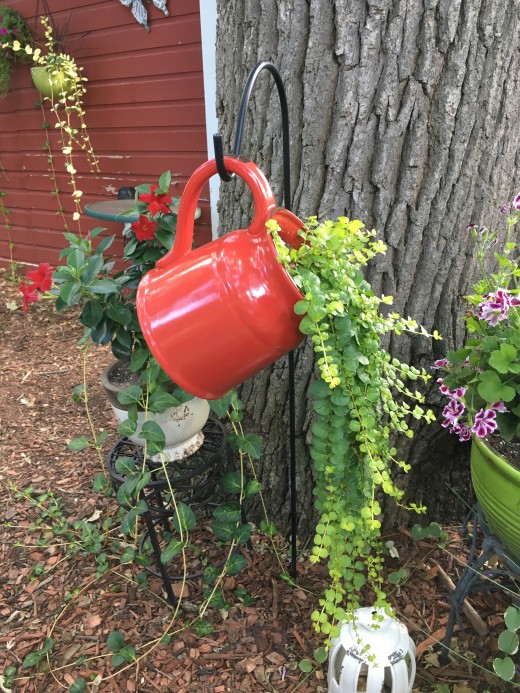
Growing Vegetables and Flowers in Containers
Container gardening is growing in popularity for a variety of reasons. You can grow flowers, herbs, and vegetables in containers. You can use pots, baskets, barrels, Topsy Turvy planters, or vintage containers such as a rusty wheelbarrow.
The location options are also varied; you can put containers on patios, balconies, indoors, in filler spaces in your yard, or even within the confines of your garden.
When you container garden, you can extend your growing season by allowing yourself the option to move your containers indoors for early or late freezes. We use the Earth Box for that exact purpose.
Soil Tips for Containers
It is important to use the correct soil when container gardening. Here are the differences in purchased soils:
Topsoil - exactly that, for outdoor use with no added nutrients (to fill holes in your yard)
Garden Soil Mix - a soil mixture with light nutrients mix for outdoor use
Potting Soil - here is your choice, this is made for containers!
The proper soil is essential in container gardening. This allows you complete control over your soil amendments. Containers with drainage holes simulate planting in the ground while containers without holes just need a small layer of rocks or porous medium in the bottom to keep your pot well drained.
When selecting your plants do not limit yourself on one type of plant in your pot. Adding flowers to an herb or vegetable container attracts pollinators so go ahead an add variety in your choices.
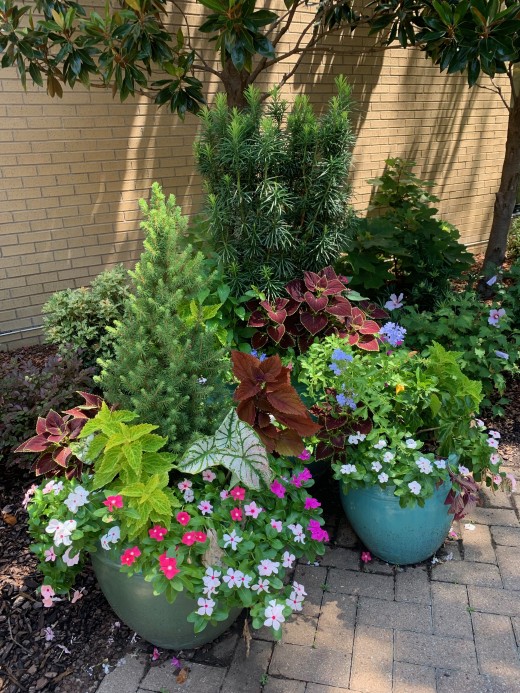
Container Vegetable Gardening Advantages
Vegetable container gardening is a great way to garden year round. People in urban settings usually do not have access to garden space so a few pots on your balcony is a great way to get some fresh veggies.
Another advantage is the flexibility to bring your containers inside if there is a cold spell in the early spring or early fall.
This is also an excellent way to try gardening. Simply sprinkle a few seeds in a pot, cover with good soil, water and watch them grow! It is rise to start with someting very simple and reliably successful like lettuce seeds, marigolds, basil, kale, or arugula.
Lastly, you are completely in charge of the moisture levels. All you have to do is remember to water (when needed). Some containers are self watering which makes it a snap to put the plants in a container and not worry daily about the moisture levels.
Container Growing Disadvantages
In spite of the best efforts you can occasionally run into problems with vegetables growing in containers. Here are a few of the problem areas that can arise, and some tips you might try to get your vegetables back on track.
Plants growing tall and spindly - poor production: Almost always this is a lighting problem. If your are using artificial lights be sure to put them very close to the plants, in many cases almost touching, as they are not as intense as the sun. Alternatively, you might just need to have them stay on for a longer period of time each day.
Your vegetable plants have stunted growth: Often this is a problem with lack of nutrient, specifically low levels of phosphate in the soil. This can be improved by changing the fertilizer. If your are growing warm weather vegetables it might also be caused by a low ambient temperature.
Wilting vegetable plants: Most of the time this is caused by inadequate watering. It might be either not enough water, or sometimes it can be due to inadequate drainage in the container. Be sure to check that the container's drainage holes aren't plugged. Check that your container has enough water for the plant, and be sure you are watering regularly. You may want to invest in a self watering container if this is a chronic problem.
Burnt plant leaves: This can be a real problem in containers, and it is often caused by high salt levels in the soil. It shows up as a crusty white layer on top of the soil. Try flushing the soil out with water, but be aware that in hard water areas the problem can be caused by watering with tap water. And refresh the soil each year to reduce this problem.
Plants leaves are yellowing, with some leaves dropping: Usually caused by too much moisture in the container. Try reducing how often you water, and once again check the drainage from the container. This is sometimes caused by low fertilizer levels.
Spots showing on the leaves: This is often some kind of plant disease. Take a sample to your nursery and try applying the appropriate fungicide.
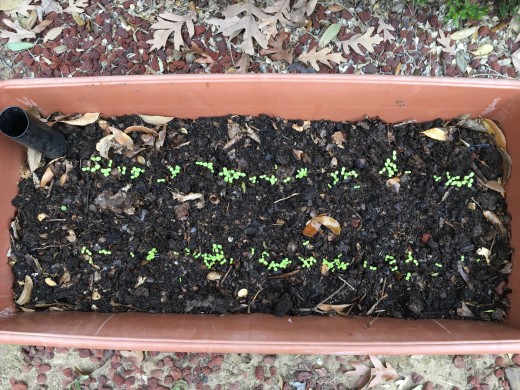
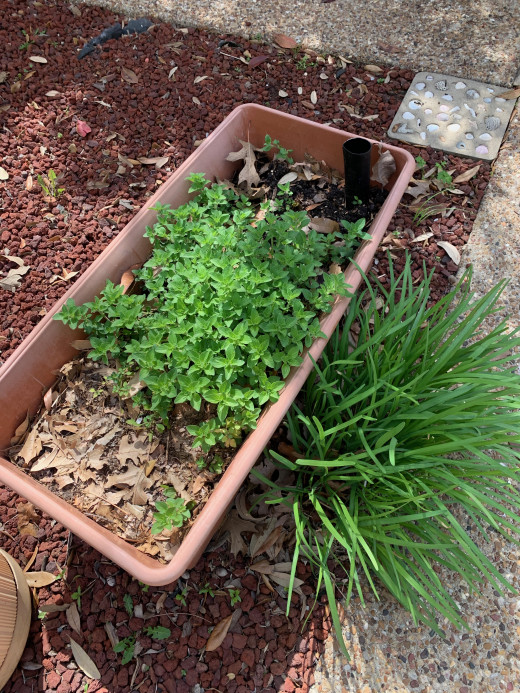
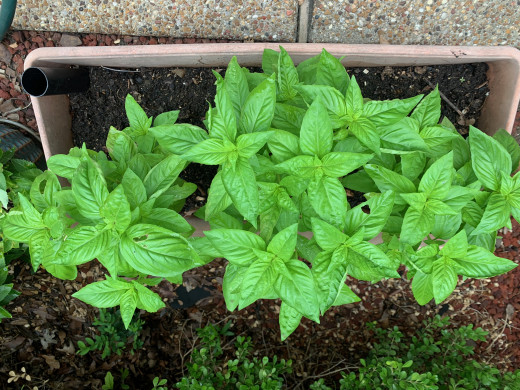
Seasonal Container Gardening
Fall & Winter
When the first frost is predicted, we scramble around our yard and cover whatever we think we can save with shredded leaves. This usually gets us a few extra weeks of veggies and enjoyment of blooms. It also lets us keep our herb production going. One of the best herbs to grow inside in a container is basil. Before the first frost and while your basil still looks healthy, snip a few 6-8 inch stems off and pinch off the lower 3-4 inches of leaves. Bring them in the house into a small vase or bottle with water in it. Keep the stems in the bottle until roots start to form (you will have to add water just about every day). After the roots have formed, transfer to a small pot and keep in the same lighting you started it inside in. You can now have fresh basil for weeks to come or even all winter!
Since we live in a moderate winter temperature area, we also bring our outside plants in the garage and set up an iron plant rack near the window. We keep a sheet near the rack to cover the plants if it dips below freezing, but mostly we can just leave them uncovered and near window lighting. Don't forget to water the plants all winter long and before you know it, it will be time to put them back outside!
Select A Plant That Is Meant To Be in a Container
Some plants are meant to be in the ground. Make sure you select plants that will actually grow in a container since that is your goal. Read labels carefully and consult your local gardening expert.
Personalize Your Container Garden
To really make your flower beds your own and still container garden, you can add several unique containers to express yourself. Two of the most popular are the wheelbarrow and the wooden barrel.
Take almost any old wheelbarrow, metal or wood, and fill it with the proper soil mix, and plant your flowers. The wheelbarrow can then be placed to add to the décor of your yard and give it that homey or country feel. Use flower plants that cascade for an added effect. The only down side, is you must hand water this type of container if you don't have a watering system that will reach the container sufficiently.
Miniature wooden wheelbarrows are on the market for the sole purpose of planting in them. They will not make as big a statement say in a front yard but can always be put in a spot to enhance a small flower bed.
The wooden barrel can also be used in the same fashion but tilt it on it's side, with a slight angle on it, so the soil and flowers have some type of bowl-effect in the barrel. My neighbor has one of these placed under a large tree and it does well in the shade of the tree.
There are, of course, several other types of containers that you can adapt yourself so the possibilities are endless. I have seen old wooden high chairs converted to holding containers, and porcelain bathtubs too. I am always on the lookout for wrought-iron plant holders at garage sales to use in my backyard for the same purpose.
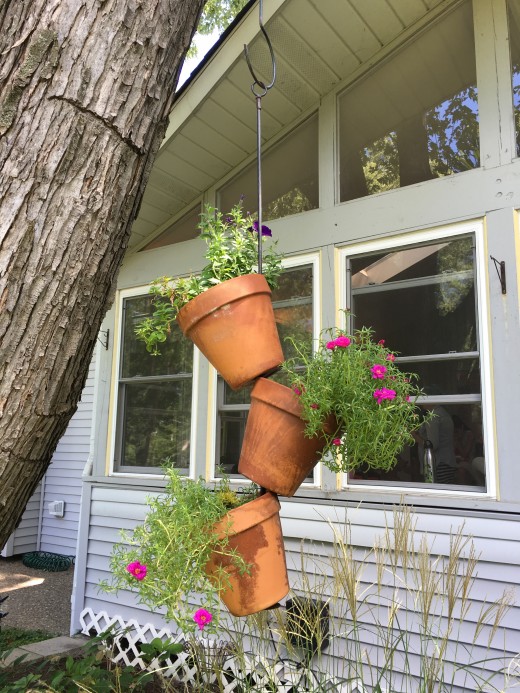
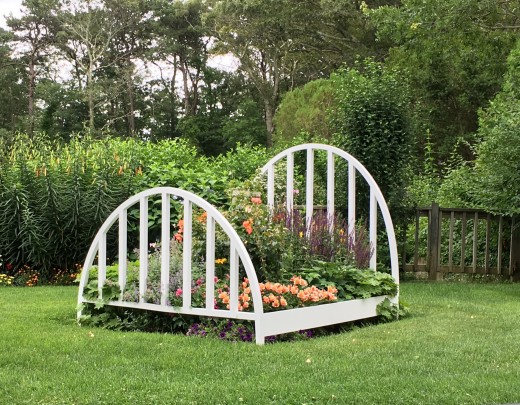
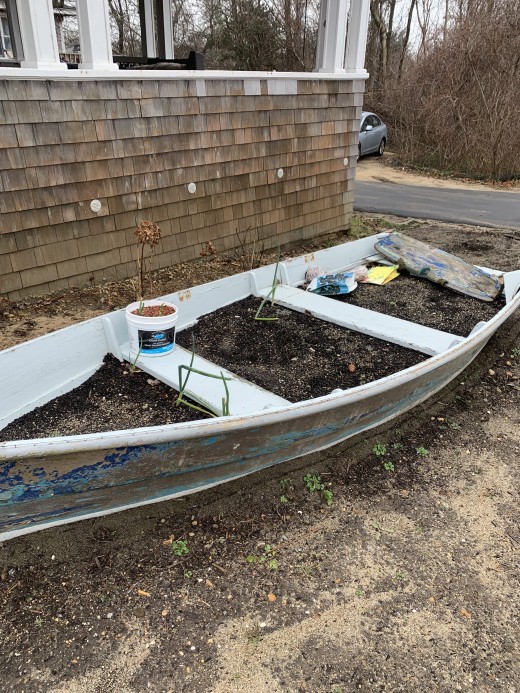
From Edwin Curran
"Flowers"
Flowers are the music of the ground
From earth's lips spoken
without sound.
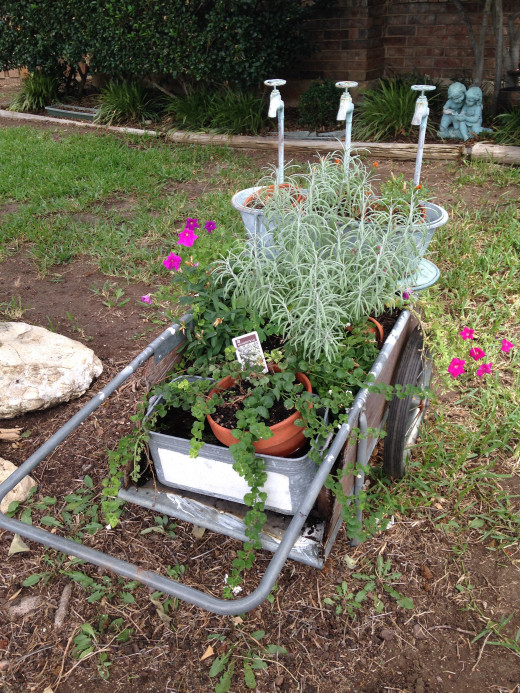
This content reflects the personal opinions of the author. It is accurate and true to the best of the author’s knowledge and should not be substituted for impartial fact or advice in legal, political, or personal matters.
© 2009 Joanie Ruppel








